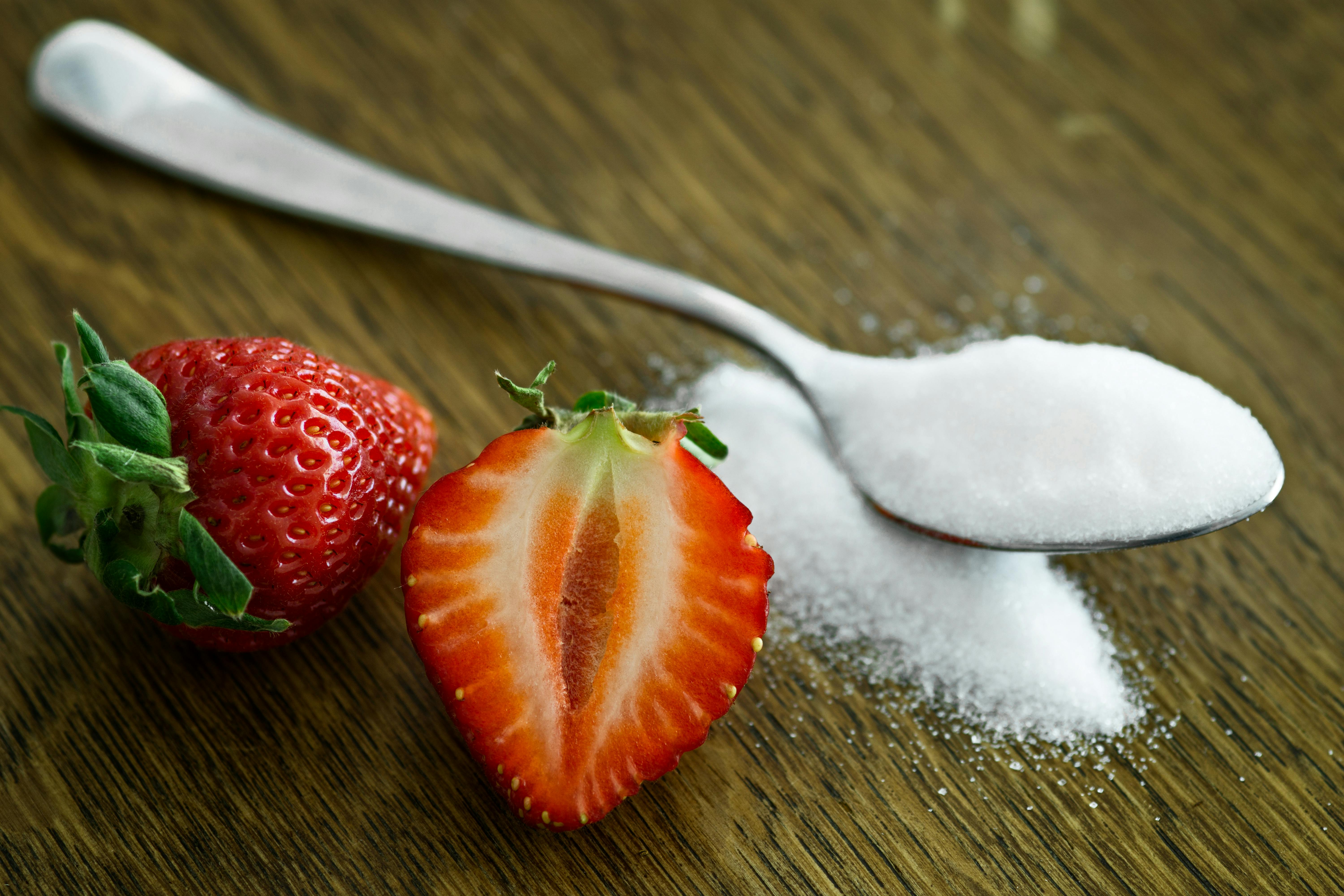Growing strawberries in Arkansas can be a rewarding experience. Strawberries are a favorite of home gardeners and with the right conditions, you can enjoy a bumper crop of delicious berries. With its warm summers and mild winters, Arkansas is an ideal place to grow strawberries. With the right care and attention, you can have a healthy strawberry patch year-round. This guide will provide you with all the information needed to successfully grow strawberries in Arkansas, from selecting the right variety to planting and harvesting your crop.To plant strawberries in Arkansas, start by choosing a sunny location with well-draining soil. Work in a 2-4 inch layer of compost or aged manure to the top 6-8 inches of soil. Plant your strawberry plants 18-24 inches apart in rows that are 3-4 feet apart. Water your newly planted strawberries deeply and regularly, especially when there is no rainfall. Mulch the plants with straw or hay to help keep the soil moist and protect the plants from extreme temperatures. Fertilize with a balanced fertilizer every two weeks during the growing season. Once your strawberries have finished producing fruit, cut off all the leaves and discard them to help prevent any disease buildup in your soil.
What Type Of Soil Is Best For Growing Strawberries In Arkansas?
Growing strawberries in Arkansas is a rewarding experience, but it requires the right type of soil to ensure success. Strawberries need a well-draining soil that is slightly acidic. The ideal soil should have a pH between 5.5 and 6.5, and should be enriched with organic matter such as compost or peat moss.
It is also important to make sure the soil is not too compacted or overly dry, as this can lead to poor drainage and difficulty for the roots to penetrate the soil. Loosening and aerating the soil by adding mulch or compost will help keep it light and fluffy so that water can penetrate easily.
Strawberries also need plenty of nutrition to produce good yields, so adding fertilizer prior to planting can help ensure that they get what they need. The best fertilizers for growing strawberries in Arkansas are those that are high in phosphorus, nitrogen, and potassium, as these are essential nutrients for strong plant growth and abundant fruit production.
Finally, it’s important to provide adequate irrigation for your strawberry plants throughout their growing season. Keeping the soil moist but not overly wet will help ensure good fruit production even during periods of drought. Regular watering helps keep plants healthy while also helping them produce more fruit than they would otherwise be able to with less water.
By following these tips for selecting the best type of soil for growing strawberries in Arkansas, you can ensure a successful harvest each year!
When To Plant Strawberries In Arkansas
Strawberry planting in Arkansas should begin in early spring, typically around late February or early March. The best time to plant them is when the ground is warm and the air temperature is consistently above 60 degrees Fahrenheit. It’s important to note that some varieties of strawberries can handle cold weather better than others, so it’s important to research which variety of strawberry will work best for your area before planting.
When selecting a location for your strawberry plants, it’s important to choose an area that gets plenty of sunlight and good drainage. A raised bed or container can be used if necessary, as long as the soil is well-draining and not overly wet. Once you’ve selected a location, you’ll need to prepare the soil by adding plenty of compost or organic matter. This will help ensure that your strawberries get enough nutrients and moisture throughout the growing season.
It’s important to water your strawberry plants regularly throughout the growing season, especially during hot or dry spells. Mulch can also be added around the plants to help keep the soil moist and reduce weeds. When harvesting strawberries, make sure they are fully ripe before picking them off of the plant as this helps ensure maximum sweetness and flavor!
With proper care and maintenance, you can enjoy a delicious harvest of strawberries from your Arkansas garden every year!
How Much Sunlight Do Strawberries Need In Arkansas?
Strawberries are one of the most popular fruits grown in Arkansas, and they require plenty of sunlight to thrive. Strawberries need at least six hours of direct sunlight each day in order to produce sweet, juicy berries. In Arkansas, spring and summer months provide the most optimal conditions for growing strawberries. The days are longer, and the average temperature is warm enough to support strawberry growth.
When planting strawberries in Arkansas, it is important to choose an area that receives full sun for most of the day. If possible, select a location that has protection from strong winds and extreme temperatures. Planting strawberries near other crops can also help keep them protected from wind and other weather elements.
In addition to providing adequate sunlight, proper soil drainage is essential for strawberry growth in Arkansas. The soil should be well-drained with a pH level between 5.5 and 6.8. If necessary, add organic matter such as compost or manure to improve drainage before planting strawberries.
Finally, regular irrigation is essential for keeping strawberry plants healthy in Arkansas during hot summer months when rainfall is scarce. Be sure to water your plants deeply every few days during dry periods to keep them hydrated and prevent wilting or disease development.
Overall, if you are planning on growing strawberries in Arkansas, make sure you choose an area with full sun exposure and provide your plants with good soil drainage and regular irrigation for optimal growth and yield throughout the season!
Selecting Strawberry Varieties Suitable For Growing In Arkansas
Strawberries are one of the most popular fruits in the United States. Growing strawberries in Arkansas can be a rewarding experience, but it is important to select the right variety that is well-suited for growing in this region. Here are some tips on choosing the best strawberry varieties for Arkansas:
First, consider your climate and soil type. Arkansas has a humid subtropical climate with warm summers and mild winters. The soils in this state range from sandy loam to clay loam, so you will need to select a variety that can tolerate these conditions. Most strawberry varieties prefer full sun and well-drained soil.
Next, think about your harvest goals. Some strawberry varieties produce large berries with excellent flavor, while others produce smaller berries with a sweeter taste. Choose the variety that is best suited for your desired harvest goal.
Finally, research different varieties and find ones that are disease-resistant and easy to grow in Arkansas. Look for varieties such as Chandler, Sequoia, Allstar, or Cabot. These varieties have proven to be successful in this region and can provide an abundant harvest year after year.
By following these tips on selecting strawberry varieties suitable for growing in Arkansas, you can enjoy a bountiful harvest of delicious strawberries each season!

How To Care For Strawberry Plants Growing In Arkansas
Growing strawberries in Arkansas can be a rewarding and enjoyable experience. The state has a mild climate, which is perfect for strawberry plants, and the soil is well-draining and full of essential nutrients that will help the plants thrive. To get the most out of your strawberry crop, it’s important to know how to properly care for your plants. Here are some tips on how to care for strawberry plants growing in Arkansas.
The first step in caring for your strawberries is to choose a spot that gets plenty of sunlight. Strawberries need at least six hours of direct sunlight each day, so make sure you pick an area that will get plenty of sun throughout the day. Once you’ve chosen a spot, prepare the soil by adding organic matter such as compost or aged manure to help improve drainage and provide essential nutrients for the plants.
Once your soil is prepared, it’s time to plant your strawberry plants. Make sure you space them out so they have room to spread their roots and get plenty of air circulation. Mulch around the base of each plant with straw or hay to help retain moisture and control weeds. Water regularly during dry periods and fertilize every few weeks with an organic fertilizer such as fish emulsion or compost tea to ensure healthy growth.
Be sure to keep an eye out for pests or diseases that could affect your strawberry plants. If you see any signs of disease, remove affected leaves or stems immediately and dispose of them away from other plants. Common pests include aphids, mites, caterpillars, snails, slugs, and birds. Keeping an eye on your strawberry plants regularly can help prevent these pests from becoming a problem.
Finally, make sure you harvest your strawberries at the right time for maximum flavor and sweetness. You’ll know when they’re ready when they turn a bright red color and easily come off the stem when lightly tugged on. Enjoy your delicious homegrown strawberries!
How To Fertilize Strawberries Growing In Arkansas
Fertilizing strawberries in Arkansas can be a bit tricky as the soil and climate can vary drastically from one region to another. The best way to fertilize strawberries is to use a fertilizer that is specifically designed for Arkansas soils. This fertilizer should contain the necessary macronutrients, such as nitrogen, phosphorus, and potassium, as well as micronutrients like iron, calcium, and magnesium. It is important to use the correct amount of fertilizer for your specific strawberry patch so that the plants have enough nutrients to grow and produce a good yield.
When fertilizing strawberries in Arkansas it is important to take into account the pH level of your soil. A pH test can be performed on your soil by a local garden center or agricultural extension office. The ideal range for soil pH in Arkansas is 6.0-7.0; if your soil has a lower pH it may need additional lime before applying fertilizer. If your soil has a higher pH level then you may need to use an acidifying fertilizer or sulfur-based product before applying regular fertilizer.
When applying fertilizer to strawberries in Arkansas it is important to do so at the right time of year and in the right amount. The best time of year for fertilizing strawberries in Arkansas is during late winter or early spring when the plants are just beginning their growth cycle; this will help ensure that they have all of the nutrients they need throughout the growing season. It is also important not to overfertilize as this can cause stunted growth and poor yields. A general rule of thumb for fertilizing strawberries in Arkansas is 1/4 pound per 100 square feet; if you are unsure about how much fertilizer to apply then it is best to consult with your local garden center or agricultural extension office.
Fertilizing strawberries in Arkansas can be a bit tricky but with some careful planning and monitoring you can ensure that your plants have all of the nutrients they need throughout the growing season. By using an appropriate fertilizer designed for Arkansas soils, testing your soil’s pH level, and applying just enough fertilizer at the correct time of year you should be able to get great results from your strawberry patch!
How To Water And Irrigate Strawberry Plants Growing In Arkansas
Watering and irrigating strawberry plants in Arkansas is essential for successful growth and production. Strawberry plants typically require 1 to 2 inches of water per week. The best way to ensure the plants get enough water is to set up an irrigation system, such as drip irrigation or overhead irrigation. This will help conserve water and minimize runoff. When watering strawberry plants, avoid wetting the foliage as this can cause disease. Instead, water directly at the root zone of the plant. Also, it is important to check soil moisture levels regularly to ensure that the plants are not getting too dry or overwatered. If the soil feels dry more than one inch below the surface, it is likely time for more watering.
If you choose to use overhead irrigation for your strawberry plants, make sure to adjust the frequency and duration of watering depending on weather conditions and rainfall amounts. It is important that you do not overwater because this can lead to root rot and other diseases in the plant. During periods of excessive rainfall or high humidity, it may be beneficial to reduce overhead irrigation or even skip a few days between irrigations.
In addition to regular watering, adding mulch around strawberry plants can help conserve moisture in the soil and reduce weed growth. Organic mulches such as straw or bark chips work best for this purpose. Adding a layer of mulch around your strawberry plants will also help keep their roots cool during hot summer months in Arkansas, which can lead to improved yields.

Conclusion
Growing strawberries in Arkansas can be a rewarding and enjoyable experience. The soil type, climate, and location all play a role in how successful you will be at growing strawberries. It is important to know what kind of strawberry plants will do best in your area, as well as when to plant and fertilize them. Additionally, you should always use proper water management techniques to ensure that your plants get the moisture they need without being over-watered. Finally, always make sure to inspect your plants regularly for signs of disease or pests. If you follow these tips, you can have a successful strawberry patch in Arkansas!
Growing strawberries in Arkansas is a great way to enjoy fresh-tasting produce from the comfort of your own home. With the right preparation and knowledge of the climate and soil type, you can have success with growing strawberries in Arkansas for many years to come.



